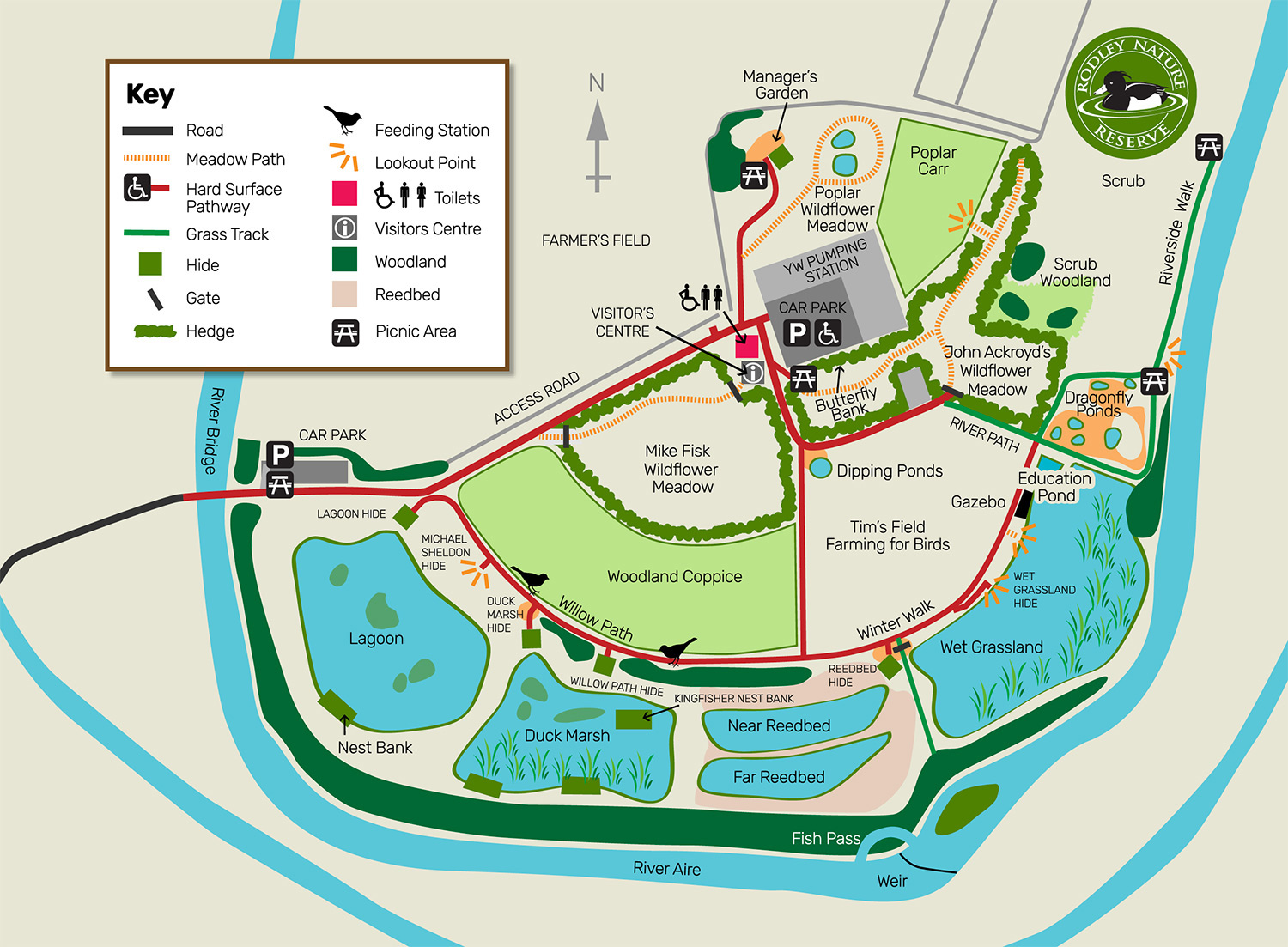Habitats and Species
Click on the hotspots for more details.
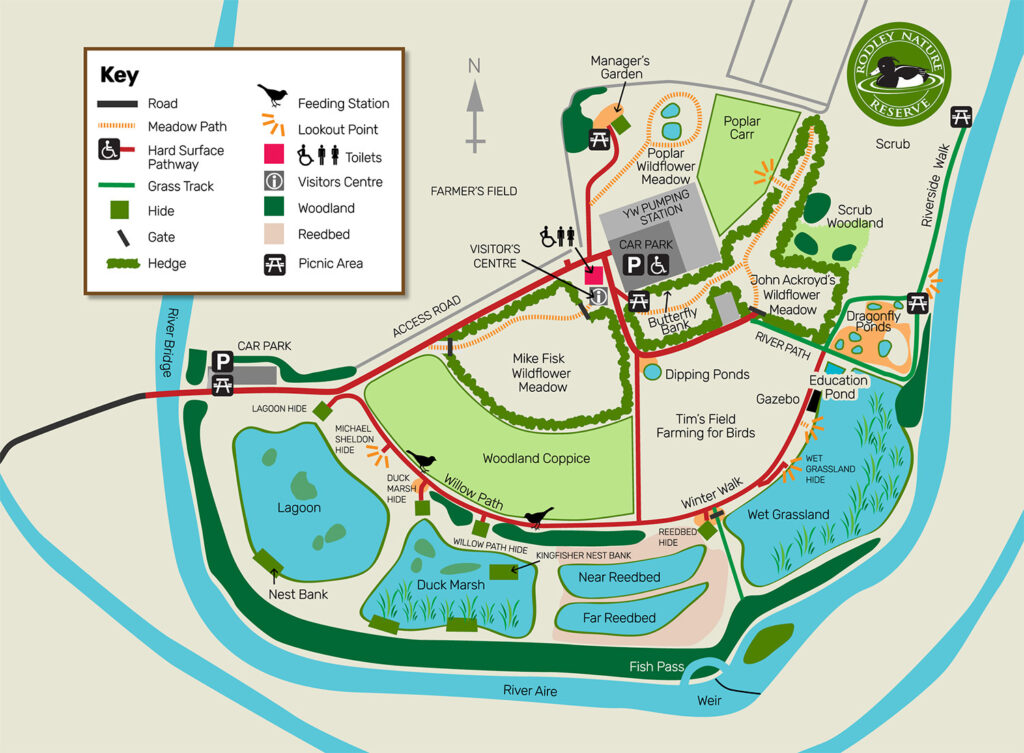
Prepared in autumn 2020 the meadow contains a wide variety of wildflower including Oxeye Daisy, Yellow Rattle, Poppy, Viper’s Bugloss and Field Scabious. In autumn the row of Poplar trees on the northern boundary regularly attract winter visiting Fieldfare and Redwing
Various Warblers breed in the Poplar Carr and Woodcock can be found here some winters. There is no access to the area but there is a viewing point overlooking it at the top end of the John Ackroyd Meadow.
The Scrubland is a wild area at the eastern end of the Reserve. Common Whitethroats breed here in the spring and summer and it is a popular hunting area for raptors throughout the year. The Barn Owl breeds successfully in the nest box located in this area which is best viewed from the Riverside Walk.
Enjoy a walk through the wildflower meadows on well cut paths in the summer months to see wild flowers and butterflies.
In early summer at the Dragonfly Ponds look for Large Red, Azure and Blue-tailed Damselflies along with Banded Demoiselles, Broad bodied and Four- spotted Chasers, Emperor Dragonflies and Southern Hawkers. Later in the summer Brown and Migrant Hawkers and Common Darters can be seen.
Enjoy a walk through the Wildflower Meadows on well cut paths in the summer months to see many species of wildflowers and butterflies.
Various species of birds breed in the Woodland Coppice including Willow Warbler, Garden Warbler, Chiffchaff, Blackcap Common Whitethroat, Bullfinch and Song Thrush.
Bird-friendly seed crops grown on Tim’s Field bring in flocks of Linnets in the autumn and winter months together with Reed Buntings and Chaffinches.
The Wet Grassland provides ideal breeding habitat for Reed Buntings, Reed Warblers, Sedge Warblers, Little Grebe, Coot and Moorhen. Snipe and Teal can be found here in the autumn and winter months and Water Rails are present throughout the year.
Sedge Warblers, Reed Warblers and Reed Buntings breed in the Reedbed in spring and summer. Kingfishers can be seen on all the wetland areas throughout the year but the Kingfisher Pool can provide particularly good views.
The Duck Marsh was redeveloped in 2021 to include a series of shallow graded spits and islets which has since attracted Little Egret and Grey Heron throughout the year. Lapwing and Oystercatcher are present during spring and early summer. Since its redevelopment the Little Ringed Plover and Green Sandpiper have been the two commonest small waders seen here.
The Lagoon is home to various waterbirds throughout the year. Oystercatchers, Great Crested and Little Grebes breed here in the spring and summer. An artificial Sand Martin nesting bank attracts good numbers of breeding birds. In winter Wigeon, Pochard, Goldeneye and Goosander can be seen.
Feeder stations and a small pond in the Garden attract a wide range of birds including Bullfinch, Greenfinch, Chaffinch, Reed Bunting, Great Tit and Blue Tit. Great Spotted Woodpeckers are also frequent visitors. Little Owls nest in a box in the trees here and are often seen during the day.
The Lagoon
The Lagoon is home to various waterbirds throughout the year. Oystercatchers, Great Crested and Little Grebes breed here in the spring and summer. An artificial Sand Martin nesting bank attracts good numbers of breeding birds. In winter Wigeon, Pochard, Goldeneye and Goosander can be seen.
The Duck Marsh
The Duck Marsh was redeveloped in 2021 to include a series of shallow graded spits and islets which has since attracted Little Egret and Grey Heron throughout the year. Lapwing and Oystercatcher are present during spring and early summer. Since its redevelopment the Little Ringed Plover and Green Sandpiper have been the two commonest small waders seen here.
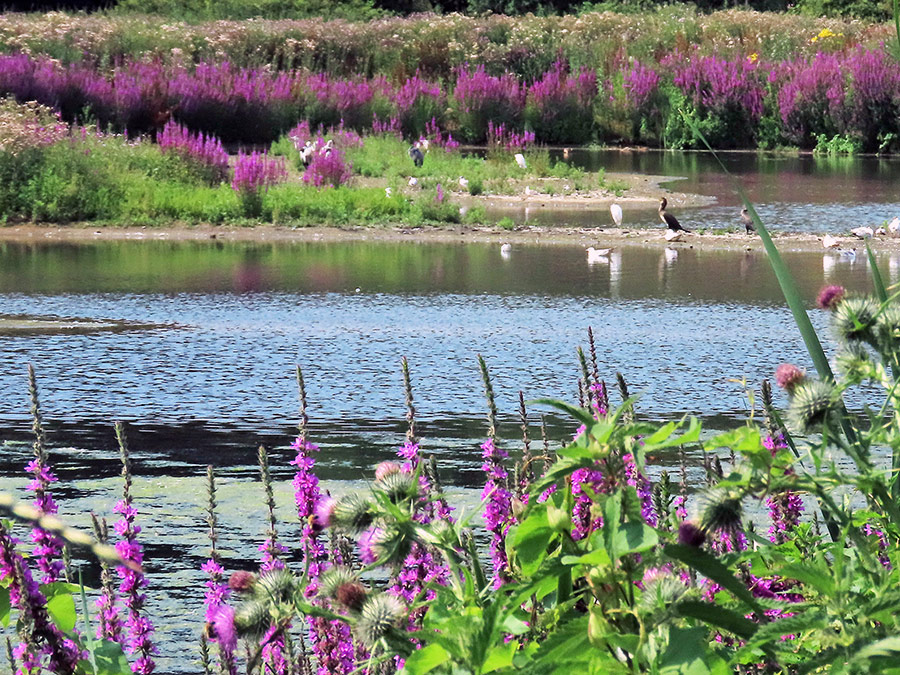
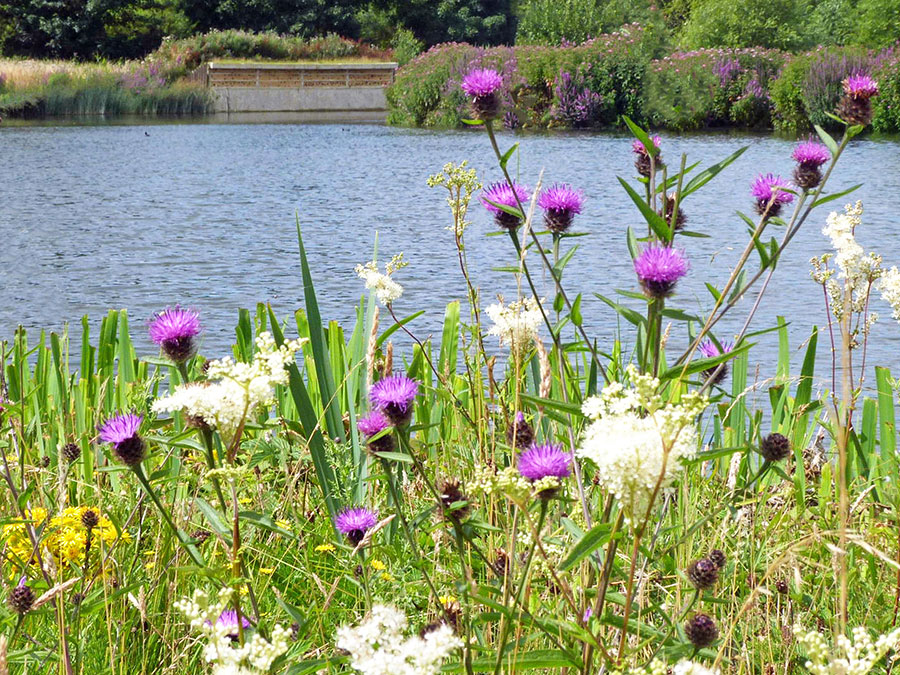
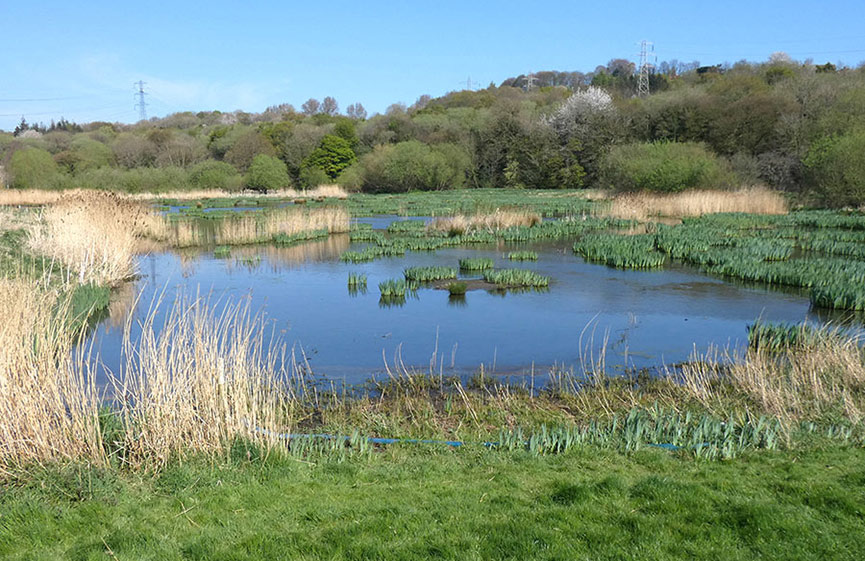
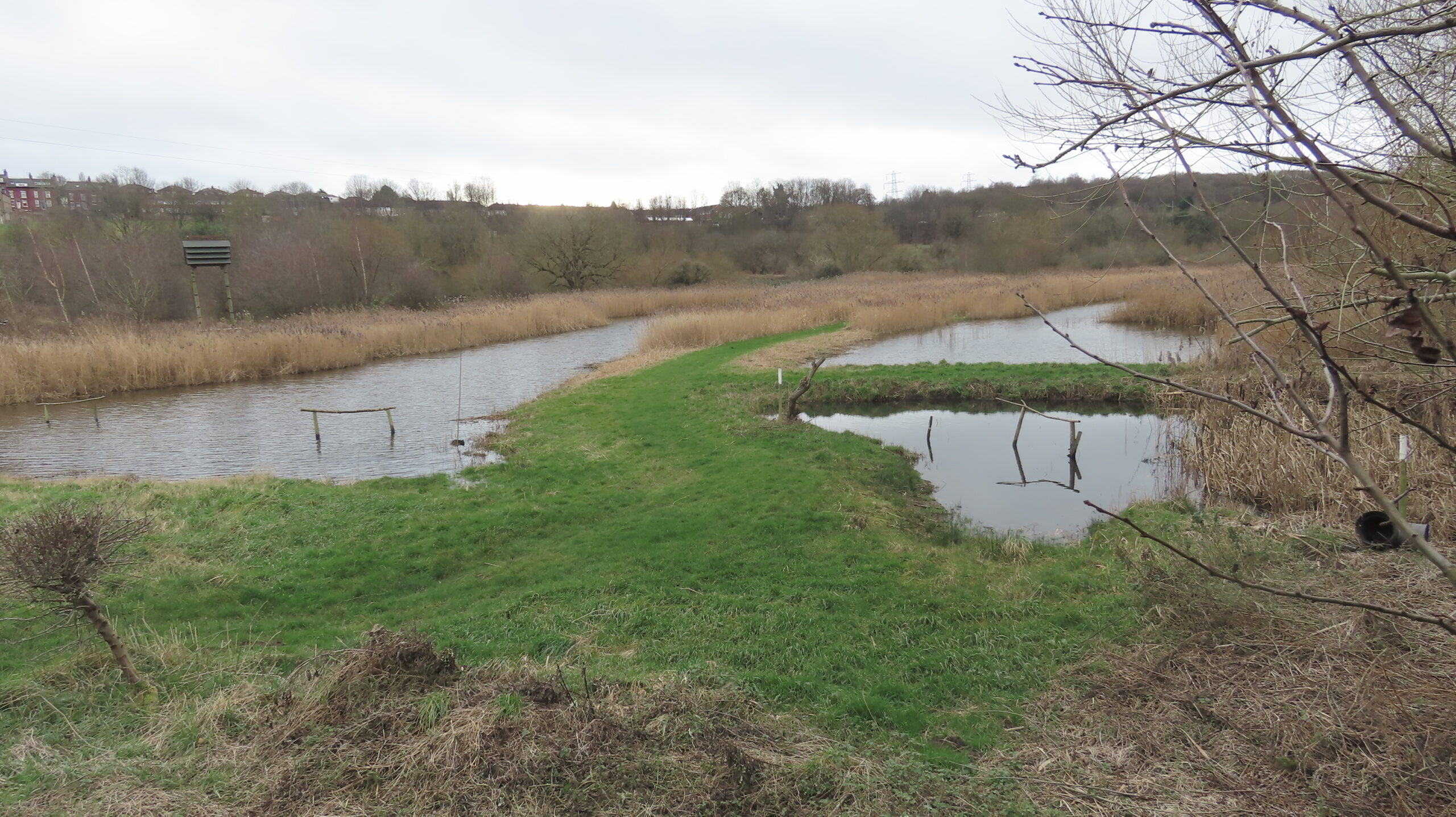
Reedbeds
Sedge Warblers, Reed Warblers and Reed Buntings breed in the Reedbed in spring and summer. Kingfishers can be seen on all the wetland areas throughout the year but the Kingfisher Pool can provide particularly good views.
Fish Pass
Constructed in 2012, the Fish Pass was designed to allow native fish such as Brown trout and European eels in the River Aire to pass around the barrier posed by the 1.8m high weir on their migration journeys. Unfortunately, because of Health and Safety issues, accompanied public access is not now possible to this part of the Reserve.
Wet Grassland
The Wet Grassland provides ideal breeding habitat for Reed Buntings, Reed Warblers, Sedge Warblers, Little Grebe, Coot and Moorhen. Snipe and Teal can be found here in the autumn and winter months and Water Rails are present throughout the year.
Dragonfly Ponds
In early summer at the Dragonfly Ponds look for Large Red, Azure and Blue-tailed Damselflies along with Banded Demoiselles, Broad bodied and Four- spotted Chasers, Emperor Dragonflies and Southern Hawkers. Later in the summer Brown and Migrant Hawkers and Common Darters can be seen.
Tim’s Field
Bird-friendly seed crops grown on Tim’s Field bring in flocks of Linnets in the autumn and winter months together with Reed Buntings and Chaffinches.
Wildflower Meadows
Enjoy a walk through the Wildflower Meadows on well cut paths in the summer months to see many species of wildflowers and butterflies. The Poplar Wildflower Meadow is particularly species rich during summer.
Manager’s Garden
Feeder stations and a small pond in the Garden attract a wide range of birds including Bullfinch, Greenfinch, Chaffinch, Reed Bunting, Great Tit and Blue Tit. Great Spotted Woodpeckers are also frequent visitors. Little Owls nest in a box in the trees here and are often seen during the day.
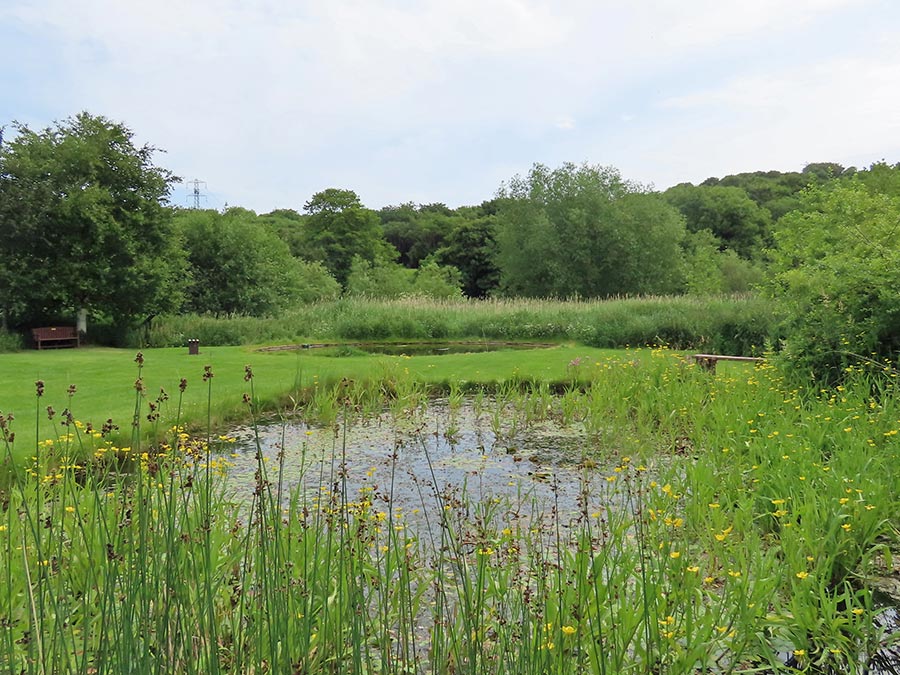

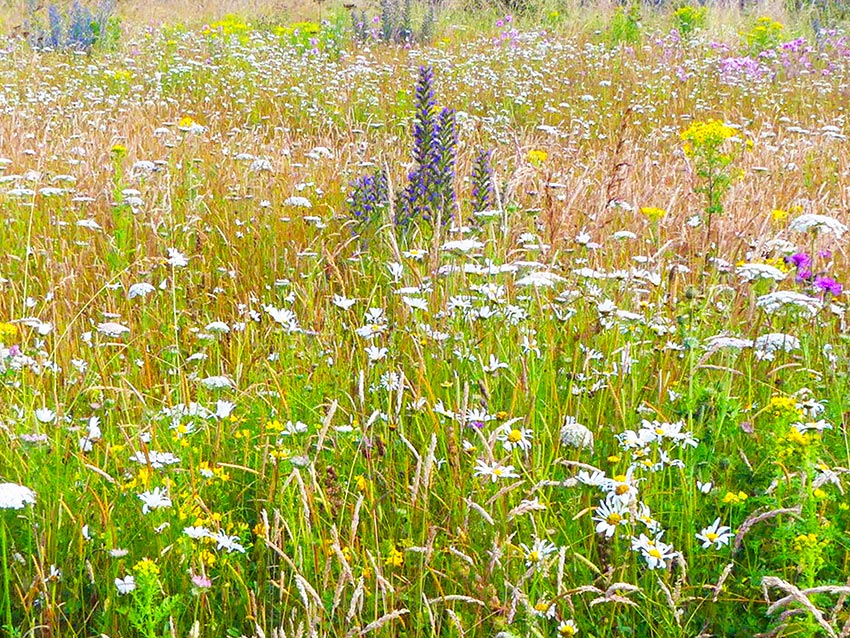
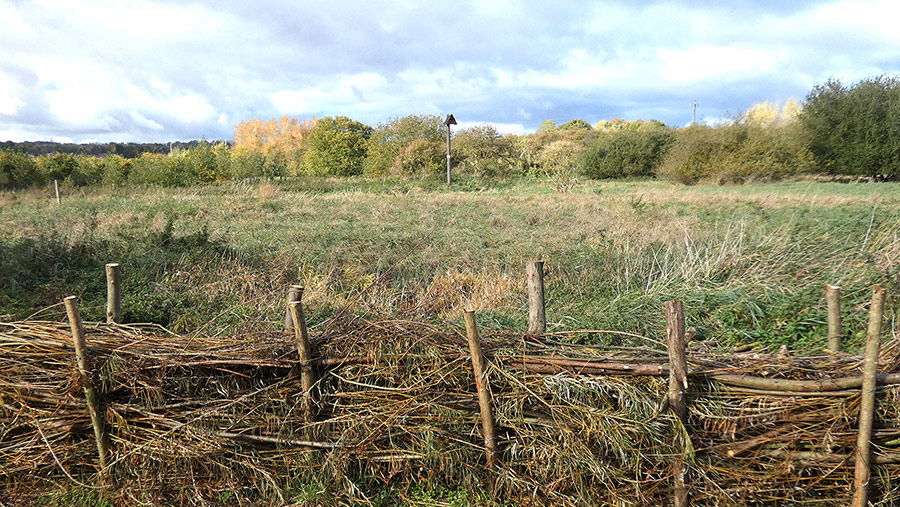
Poplar Carr
Various Warblers breed in the Poplar Carr and Woodcock can be found here some winters. There is no access to the area but there is a viewing point overlooking it at the top end of the John Ackroyd Meadow.
Scrubland
The Scrubland is a wild area at the eastern end of the Reserve. Common Whitethroats breed here in the spring and summer and it is a popular hunting area for raptors throughout the year. The Barn Owl breeds successfully in the nest box located in this area which is best viewed from the Riverside Path.
Woodland Coppice
Various species of birds breed in the Woodland Coppice including Willow Warbler, Garden Warbler, Chiffchaff, Blackcap Common Whitethroat, Bullfinch and Song Thrush.
